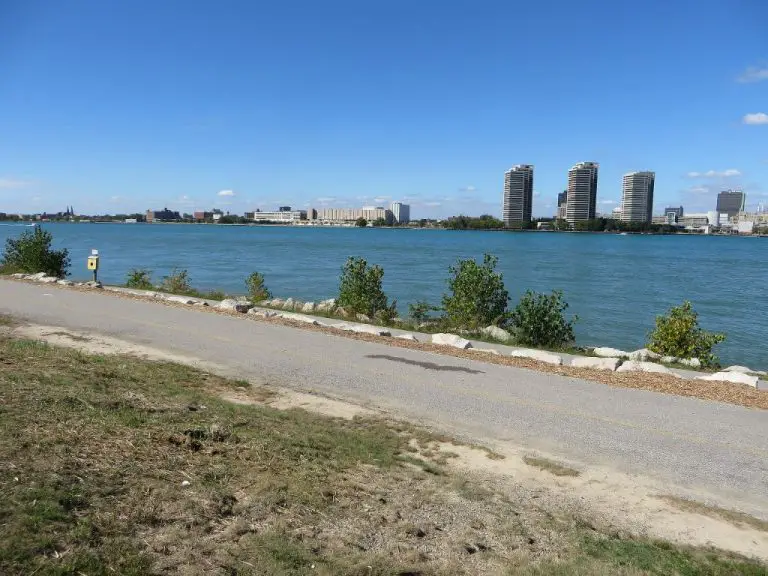What Is Clay Made Out Of?
Clay is a type of fine-grained natural soil material that is plastic when moist but hard when fired. It is composed primarily of hydrated aluminosilicate minerals known as clay minerals. These clay minerals are derived from the chemical weathering and decomposition of rocks over long periods of time. The basic building blocks of clay are silicon and aluminum oxides that form sheets and frameworks containing other elements like iron, magnesium, sodium, calcium and potassium. When mixed with water, the clay minerals develop plasticity, allowing them to be molded into various shapes. After drying and firing, the clay becomes permanently hard. There are many different types of clays that have varied physical properties and chemical compositions based on how and where they formed. Clay’s unique combination of plasticity, strength, abundance, and low cost has made it an indispensable material for human civilization.
Clay Minerals
Clay is composed primarily of minerals known as clay minerals. The most common clay minerals include kaolinite, montmorillonite, and illite.
Kaolinite is made up of silica tetrahedron sheets bonded to aluminum octahedron sheets. It is the main component of kaolin clay. Kaolinite has low plasticity and shrinkage.
Montmorillonite has a similar sheet structure but also has spaces between the sheets where water molecules and exchangeable cations can enter. This gives montmorillonite the ability to expand and swell. It is the major mineral component in bentonite clay.
Illite is made of aluminum silicate sheets bonded together by potassium ions. The potassium ions prevent water from entering between the sheets, so illite does not swell. Illite contains more aluminum and less silica than the other clay minerals.
There are also other less common clay minerals like chlorite, halloysite, and vermiculite. The specific clay minerals present determine the properties and uses for that clay deposit.
Silicon and Aluminum Oxides
Two of the most important chemical components in clay are silicon and aluminum oxides. These oxides are what give clay its unique plasticity or ability to be molded and shaped when wet.
Silicon dioxide, also known as silica, makes up a large percentage of clay’s composition, often over 40%. Silica has a tetrahedral molecular structure, meaning a silicon atom is surrounded by four oxygen atoms. This allows silica particles to form long chains and sheets that give clay its sturdiness.
Aluminum oxide, also called alumina, is the other essential oxide in clay. Alumina makes up between 10-45% of clay’s mass. Like silica, alumina also forms tetrahedral structures with oxygen that create sheets. However, the chemical bonds in alumina are weaker, allowing these sheets to more easily stack on top of each other.
The combination of strong silica chains and weaker alumina sheets is what gives clay its plasticity. When wet, water molecules can penetrate between the alumina sheets, allowing them to slide over each other while the silica chains still hold the structure together. This gives clay its moldable yet sturdy wet properties that can be dried and hardened.
Other Chemicals
In addition to silicon and aluminum oxides, clay contains various other chemicals that influence its properties. Some of the most significant include:
- Iron – Gives clay a rusty red or yellowish color. Iron oxide is a major component of red earthenware clays.
- Magnesium – Increases workability and plasticity. Magnesium-rich clays are very sticky when wet.
- Sodium – Helps lower maturation temperatures and makes clay easier to fire. Sodium salts cause “scumming” on clay surfaces.
- Calcium – Affects drying performance. Calcium carbonate acts as a flux to lower firing temperatures.
Trace elements like manganese, titanium, potassium, and chromium are also present in clays and contribute to their behaviors and looks.
Origin and Formation

Clay forms through the weathering and decomposition of rocks over long periods of time. The main rocks that clay originates from are granite, feldspar, and mica. When these rocks are exposed to water and air, they slowly break down in a process called chemical weathering. The minerals in the rocks dissolve and are transported away by water, while other minerals undergo hydrolysis and transform into clay minerals.
The most common clay minerals like kaolinite, montmorillonite, and illite are formed when rocks like feldspar and mica react with carbonic acid, silicic acid, and other agents. The acidic solutions cause the rocks to decompose and leach away minerals like potassium, sodium, and calcium. What’s left behind are the silicon and aluminum oxides that make up the basic structure of clay.
Over many thousands to millions of years, these weathering processes result in the accumulation of clay deposits across the world. Clay is most abundant in wet tropical regions where high rainfall accelerates the chemical weathering. It also accumulates in floodplains, deltas, lakes, and marine basins where sediments are deposited over time.
Types of Clay
There are four main types of clay, categorized based on their mineral content and properties:
Kaolin
Also known as China clay, kaolin is the softest and most common type of clay. It is generally white in color. Kaolin is primarily composed of the mineral kaolinite and contains very little iron or impurities, making it ideal for ceramics and pottery.
Bentonite
Bentonite contains high amounts of the mineral montmorillonite. It has absorbent properties and can expand several times its original volume when exposed to water. Bentonite is used for drilling fluids, foundry sand, and castings.
Ball Clay
Ball clay is very plastic and has high shrinkage when dried. It fires to a light cream or white color. Ball clay is composed primarily of kaolinite plus varying amounts of illite, quartz, mica, feldspar, and organic matter. It is used extensively in ceramics and pottery.
Fire Clay
Fire clay contains very low flux content, giving it a high degree of refractoriness. This allows it to withstand extremely high temperatures without melting or deforming. Fire clays are composed primarily of kaolinite and are used to make firebricks and ceramics.
Physical Properties
Clay has some unique physical properties that set it apart from other materials. Three of the most important physical characteristics of clay are its plasticity, cohesion, and absorption.
Plasticity refers to clay’s ability to be molded and shaped without cracking or losing its form. When mixed with water, clay becomes very soft and pliable, allowing it to be formed into pottery, bricks, and other shapes. The tiny platelet structure of clay particles enables them to slide over one another when wet, giving clay its plasticity.
Cohesion refers to the ability of clay particles to stick to each other. The electrostatic forces between the negatively charged clay particles cause them to bond tightly together. This gives clay strength and structure, while still retaining plasticity.
Absorption is clay’s ability to take in and hold onto water molecules between its particles. The spaces between the stacked clay particles act as pores to absorb and retain moisture. Absorption allows clay to be mixed into a workable paste for pottery and sculpture.
These special properties allow clay to be such a versatile material, useful for so many different industrial and artistic applications throughout history.
Uses
Clay has a wide variety of uses due to its unique physical and chemical properties. Some of the major uses of clay include:
Pottery: Clay is the primary material used to make pottery items like plates, bowls, cups, vases, and decorations. Its plasticity when wet and hardens when fired make it ideal for shaping and creating pottery.
Bricks: Bricks used in construction are often made from clay due to its durability. Clay bricks are shaped and then fired in a kiln to harden.
Cement: Clay is an important ingredient in Portland cement, the most common type of cement used around the world. It provides strength and durability to concrete.
Cat litter: Special clumping clay is used to produce cat litter. Its absorbent properties soak up waste and odor.
In addition to these, clay is used in many other applications including medications, cosmetics, paper, paint, filters, linoleum and electrical components among others.
Interesting Facts
Here are some fascinating trivia and fun facts about clay:
Clay soils can expand up to 30% when wet. Due to the absorption of water, clay particles expand and cause the soil to swell. This is why clay-rich soils often develop wide cracks when they dry out.
It takes over 1,000 years for 1 cm of topsoil to form. Topsoil formation from bare rock is an extremely slow process. Clay minerals play a crucial role in soil genesis and fertility.
Clays exhibit ‘thixotropic’ properties. This means clays become less viscous and can flow more easily when agitated or shaken. However, they thicken again when left standing.
Some clays have strong ionic bonds and can absorb toxins. These properties allow certain clays to be used medicinally, such as smectite clays for reducing diarrhea, absorbing toxins, and alleviating stomach issues.
Clay tablets were one of the earliest forms of writing. Archaeological evidence shows that prehistoric cultures used clays to create tablets for recording information, contracts, literary works, and more.
Clay is used in kitty litter due to its absorbent properties. Clumping clay litters utilize the moisture-absorbing capabilities of clay minerals like bentonite to form solid clumps when wet, trapping waste inside.
Clays are molded into sculptures that can survive thousands of years. From ancient Greek terracotta to modern porcelain figurines, fired clay allows artworks to withstand the test of time.
Clay is an important ingredient in cement, mortar, and concrete. Aluminosilicate clays provide critical binding properties when mixed with limestone and aggregates in these fundamental construction materials.
Clay deposits form distinct geological landscapes like hoodoos. Erosion of clay-rich sediments produces unusual rock formations, badland topography, and colorful stratified layers visible in the terrain.
Clays come in a rainbow of natural colors. While clay deposits are often grey or earth-toned, clays can display vibrant hues like red, orange, yellow, blue, green, pink, and purple in their natural mineral form.
Conclusion
In summary, clay is primarily composed of minerals like kaolinite, montmorillonite, and illite which contain silicon, aluminum, and oxygen. The chemical composition and structure of these minerals give clay its unique properties. While the origin of a clay deposit affects its exact mineral content, most clays are formed from the chemical weathering of rocks over long periods of time and often contain other elements like iron, magnesium, potassium, sodium, calcium, and carbon. The variety of clays can be categorized into groups like kaolin, bentonite, and fuller’s earth based on their physical qualities and uses. From pottery to construction materials, clay’s ability to plasticize, harden, and retain its shape has made it an indispensable material throughout human history. Understanding the geological processes behind clay formation provides insight into this ubiquitous substance found across the world.




